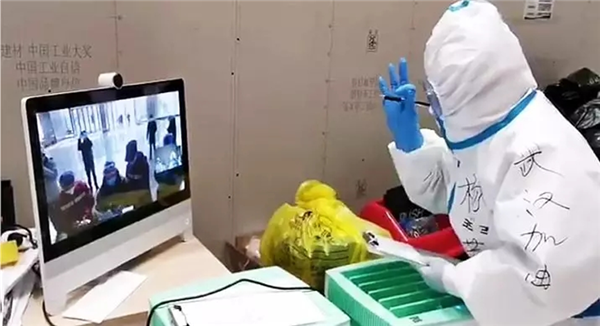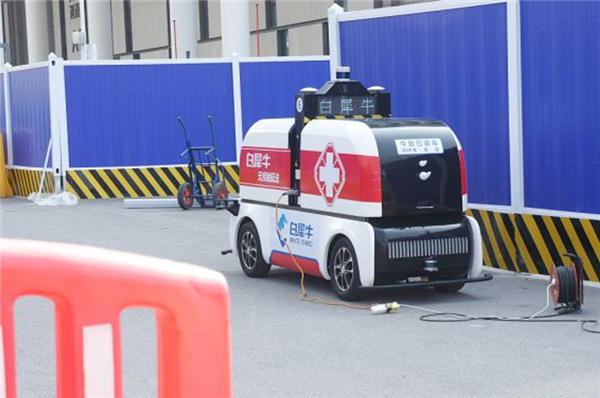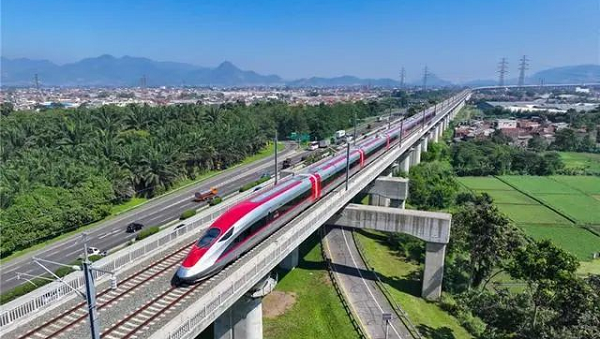Intelligent technologies boost Optics Valley cabin hospital

A medical worker talks to a medical team outside the cabin hospital, through an intelligent medical cloud platform. The temporary emergency facility was converted by the China Optics Valley Convention and Exhibition Center in the East Lake High-tech Development Zone. [Photo/WeChat account of Optics Valley of China]
A slew of cutting-edge intelligent technologies is now being deployed for vital diagnosis and logistics support at a makeshift cabin hospital, quickly converted by the China Optics Valley Convention and Exhibition Center in East Lake High-tech Development Zone.
Details of the array of technologies being utilized in the zone, also known as the Optics Valley of China -- located in Wuhan, capital city of Central China's Hubei province and epicenter of the coronavirus outbreak in China -- were released on its WeChat public account on Feb 23.
In a bid to record and treat the complex conditions of patients in the temporary hospital, an integrated medical cloud platform has been installed, zone officials said.
Through the platform, 21 diagnosis and treatment workstations in the hospital can use a 5G wireless network, sharing treatment protocols with other hospitals in Wuhan, as well as pooling the knowledge of the hospitals' experts.
This is done through real-time video communications, inside and outside the facility, via a remote video conference system.
At the same time, the patient information is stored in the cloud platform, hospital officials said.
Once there is a case to be discussed or an emergency, the expert team in the pop-up hospital and other hospitals can immediately access the patient's clinical data from the platform through the 5G network.
As a result, doctors can conduct multi-disciplinary remote consultations and provide a professional diagnosis and treatment plan.

An artificial intelligence-driven unmanned vehicle charges outside the cabin hospital in Wuhan. [Photo/WeChat account of Optics Valley of China]
In addition, the new hospital also uses unmanned and contactless distribution vehicles to transfer medical materials over short distances -- and daily necessities and supplies inside and outside the hospital.
Officials said that using artificial intelligence and driverless technology not only effectively avoids the risk of infection brought by direct contact with distribution personnel, but also reduces the logistics burden for hospital personnel.




